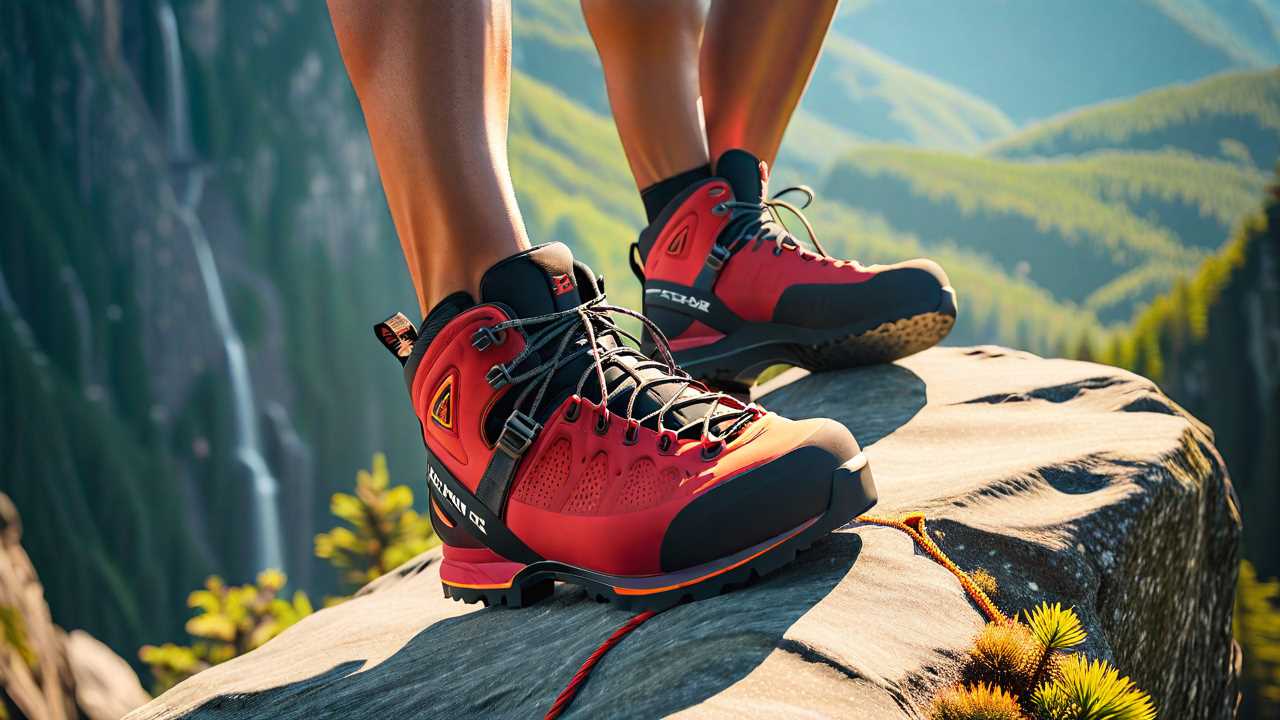
When starting your rock climbing journey, finding the right pair of shoes is essential for your comfort and performance on the wall. The choice between neutral or aggressive shoes, as well as factors like fit and closure systems, can significantly impact your climbing experience. But what makes the ideal climbing shoe for beginners? Stay tuned to discover the key considerations and top recommendations that will set you on the right path towards conquering those vertical challenges.
Factors to Consider
When selecting rock climbing shoes as a beginner, it's important to take into account several key factors to ensure comfort and peak performance on the rock wall.
The first factor to consider is the type of climbing you'll primarily be doing. For indoor climbing, a more comfortable and less aggressive shoe is suitable, while outdoor climbing may require a more aggressive, downturned shoe for better precision on small footholds.
Another vital factor is the fit of the shoe. It should feel snug, especially around the heel and arch, to provide stability and prevent your foot from sliding around inside the shoe. However, it shouldn't cause pain or discomfort, as this can lead to blisters and decreased performance.
Furthermore, the closure system of the shoe is important. Velcro closures are convenient and easy to adjust quickly, making them ideal for beginners. Lace-up shoes, on the other hand, provide a more customizable fit but can be a bit more time-consuming to put on and take off.
Types of Climbing Shoes
Understanding the various types of climbing shoes available can significantly impact your performance and comfort level during your rock climbing journey. Climbing shoes can be broadly categorized into three main types: neutral shoes, moderate shoes, and aggressive shoes.
Neutral shoes are a great starting point for beginners as they offer a flat sole, providing comfort and support for long climbing sessions. These shoes are ideal for all-day climbs and multi-pitch routes.
Moderate shoes have a slight downturn in the toe, offering a balance between comfort and performance. They're versatile and suitable for various climbing styles, making them a popular choice for climbers looking to progress.
Aggressive shoes feature a pronounced downturn in the toe, enhancing precision and power on steep and overhanging routes. These shoes excel in bouldering and sport climbing where technical footwork is essential.
Each type of climbing shoe serves a specific purpose, so understanding your climbing goals and preferences will help you choose the right shoe for your needs.
Top Picks for Beginners
For beginners venturing into the world of rock climbing, selecting the right pair of climbing shoes is essential for a successful and enjoyable climbing experience.
As for top picks for beginners, two models stand out: the La Sportiva Tarantulace and the Scarpa Origin. The La Sportiva Tarantulace is a fantastic all-around shoe that provides comfort and support for beginners. Its durable construction and adjustable closure system make it a reliable choice for those starting their climbing journey.
On the other hand, the Scarpa Origin offers excellent comfort and performance, making it ideal for beginners looking to progress in their climbing skills. Its flat profile and snug fit help with precision on the wall while maintaining a level of comfort for extended wear.
Both shoes provide solid traction and edging capabilities, essential for mastering different climbing techniques.
Ultimately, choosing between the La Sportiva Tarantulace and the Scarpa Origin boils down to personal preference and fit, so trying them on in person is highly recommended before making a decision.
Tips for Proper Fit
To guarantee peak performance and comfort while climbing, paying close attention to the fit of your rock climbing shoes is crucial. Here are some tips to make sure you find the right fit for your climbing adventures:
- Try Different Sizes: Rock climbing shoes typically fit snugly, but you should avoid excessive pain or discomfort. Experiment with various sizes to find the one that offers a balance between a firm fit and comfort.
- Consider Shoe Shape: Different shoe models cater to various foot shapes. Some are designed for narrow feet, while others are better suited for wider feet. Make sure to try on different styles to find the one that matches your foot shape best.
- Pay Attention to Materials: Leather shoes tend to stretch over time, while synthetic materials maintain their shape. Consider how the material will affect the fit in the long run when selecting your rock climbing shoes.
Frequently Asked Questions
Are Climbing Shoes Machine Washable?
Sure, some climbing shoes are machine washable, but it's best to double-check the manufacturer's guidelines. Always remove excess dirt and debris first. Gentle cycle, mild detergent, and air-drying typically work well to keep them fresh.
Can Climbing Shoes Be Resoled?
Yes, climbing shoes can be resoled. It's a cost-effective way to extend the life of your favorite pair. Look for a reputable climbing shoe resoler in your area. Resoling can give your shoes a new grip and save you money in the long run.
How Often Should Climbing Shoes Be Replaced?
For best performance, replace climbing shoes every 6-12 months, depending on frequency of use and wear. Regular inspection is key; signs like decreased grip or visible damage indicate it's time for a new pair.
Do Climbing Shoes Stretch Over Time?
Yes, climbing shoes typically stretch over time due to the materials used in their construction. Leather shoes tend to stretch more than synthetic ones. Proper sizing and fit are essential for long-term comfort and performance.
Are Vegan-Friendly Climbing Shoes Available?
Yes, vegan-friendly climbing shoes are available. They are crafted without any animal products, using synthetic materials instead. This option provides a cruelty-free alternative for those who prioritize ethical and sustainable choices in their gear.
 SportsHollywoodLifestyleFashionHome & GardenTrendsPrivacy PolicyTerms And Conditions
SportsHollywoodLifestyleFashionHome & GardenTrendsPrivacy PolicyTerms And Conditions
